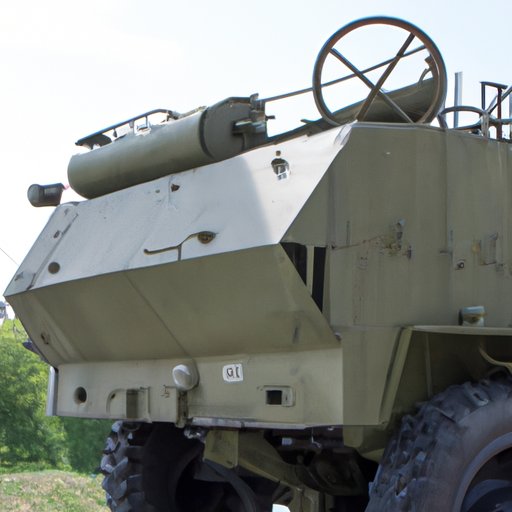Introduction
World War I (WWI) was a global conflict that lasted from 1914 to 1918, resulting in millions of casualties and significant political and social changes. During this period, many technological advancements were made, which had a major impact on the course of the war. This article will explore how technology impacted WWI by examining the introduction of new weapons, communication and reconnaissance technologies, poison gas and tanks.

How the Introduction of New Weapons Changed the Course of the War
One of the most significant ways technology impacted WWI was through the introduction of new weapons. One of the first new weapons used during the war was the machine gun, which allowed soldiers to fire hundreds of rounds per minute. According to historian Gary Sheffield, “Machine guns transformed the battlefield, creating a defensive stalemate that lasted for much of the war…They changed the nature of warfare, making it much more costly in terms of lives.”
In addition to machine guns, artillery shells and grenades were also widely used during WWI. Artillery shells enabled soldiers to fire large explosive charges over long distances, while grenades allowed them to attack enemy positions with explosive force. Both of these weapons helped to break the stalemate that had been created by machine guns and enabled soldiers to take back control of the battlefield.

Exploring the Role of Communication Technology in WWI
Communication technology was also essential for the successful coordination of troops in WWI. Telegraphs and telephones were used to send messages quickly over long distances, while field radios enabled commanders to communicate with their troops in the field. According to Dr. Peter Gray, “The use of radio and telephone technology…made it possible for commanders to direct their forces and communicate orders quickly and efficiently. This allowed them to respond more rapidly to changing situations on the battlefield.”
Examining the Use of Aerial Reconnaissance to Gain Strategic Advantage
Aerial reconnaissance was another way that technology made a major impact on WWI. Aircraft were first developed in the early 1900s and were used extensively during the war for surveillance and reconnaissance missions. According to military historian John Keegan, “The development of aircraft during WWI allowed both sides to gain a strategic advantage through aerial photography and reconnaissance missions. These missions provided valuable intelligence about enemy troop movements and allowed the Allies to plan their operations more effectively.”

Investigating the Impact of Poison Gas on the Battlefield
One of the most devastating weapons used during WWI was poison gas. Different types of gases were used by both sides, including chlorine, mustard and phosgene gases. These gases caused severe respiratory problems and even death, and their use had a major impact on the battlefield. According to historian Jean-Jacques Becker, “The use of poison gas had a devastating effect on morale and caused massive casualties among both soldiers and civilians. It also led to the development of protective equipment such as gas masks, which allowed soldiers to survive in a poisoned atmosphere.”
Exploring the Development of Tanks and How They Were Used
Tanks were another major innovation of WWI. Initially developed as an infantry support vehicle, tanks eventually evolved into powerful armored fighting machines that could cross rough terrain and engage in direct combat with enemy forces. According to military historian Christopher Clarke, “Tanks played an important role in breaking the stalemate of trench warfare and enabled the Allies to launch successful offensive operations. Tank crews used a variety of tactics, such as flanking maneuvers and supporting infantry attacks, to gain an advantage on the battlefield.”
Analyzing How Radio Technology Was Used for Tactical Coordination
Radio technology was also important for tactical coordination during WWI. Different types of radios were used, including shortwave and longwave radios, which allowed commanders to communicate with their troops in the field. According to historian David M. Kennedy, “Radio technology enabled commanders to coordinate their troops more effectively and allowed them to respond more quickly to changing conditions on the battlefield. This allowed them to plan and execute more complex operations than would have been possible without radio technology.”
Conclusion
Technology had a major impact on WWI, with the introduction of new weapons, communication and reconnaissance technologies, poison gas and tanks all playing a significant role in the course of the war. These technological advances enabled commanders to coordinate their troops more effectively, gave them a strategic advantage through aerial reconnaissance and allowed them to break the stalemate of trench warfare. This article has explored how technology impacted WWI and encouraged readers to learn more about WWI and its technological innovations.
(Note: Is this article not meeting your expectations? Do you have knowledge or insights to share? Unlock new opportunities and expand your reach by joining our authors team. Click Registration to join us and share your expertise with our readers.)
